Timeline of a goal
Ok, let's take a walk through what the lifecycle of a goal might look like.
Creation #
Goal creation is where we start. You can see the type of dialog you'll be working with below. All that is really required is the name of the goal and a target date.
You can mark the goal as private - this means that only the owner and collaborators can interact with it. It won't show up in searches or notifications for anyone else.
You can mark the goal as 'scored' - this means that you can add a score to the goal each month with the update and we'll track this over time.
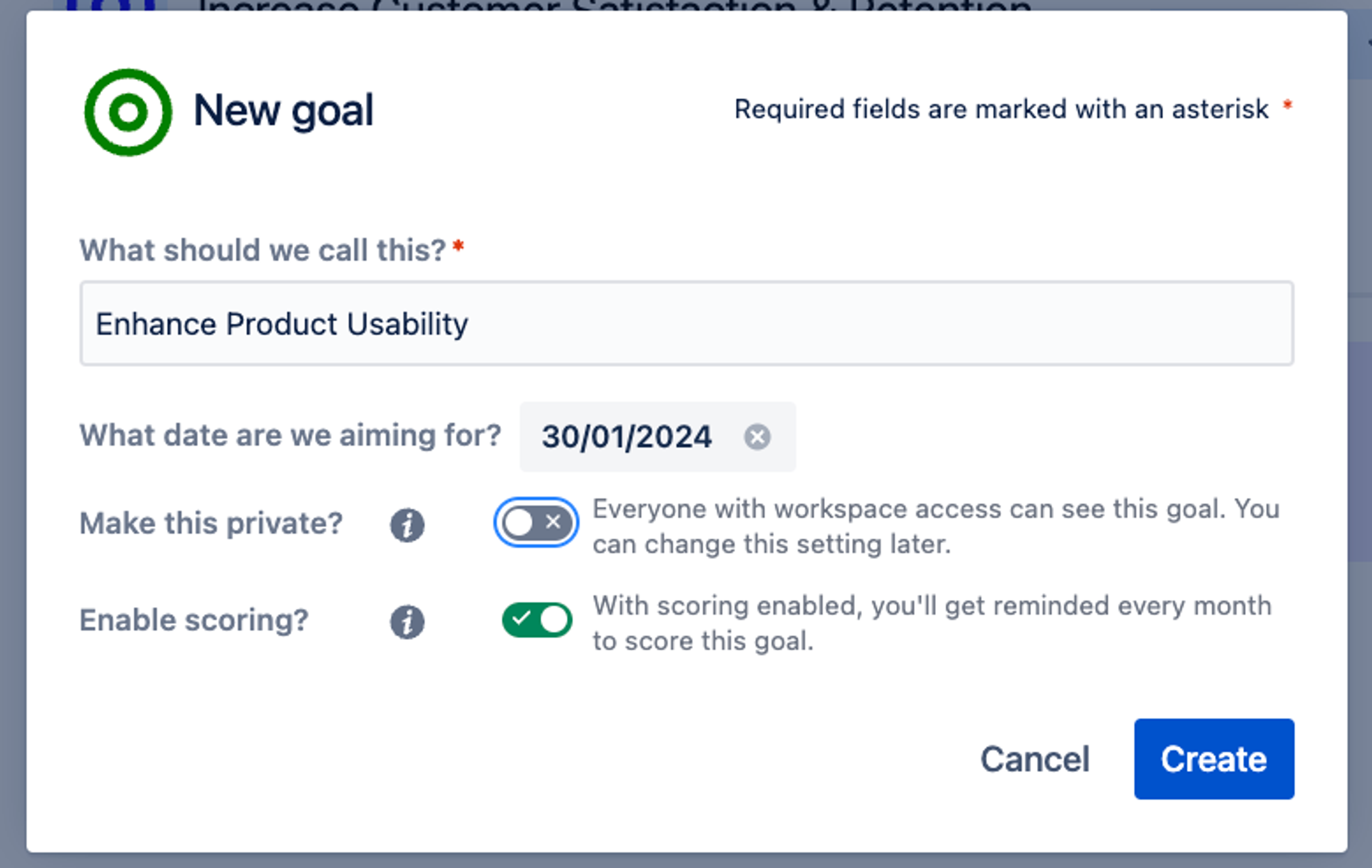
Adding context #
The next step with our goal is to get the context in place. The critical parts of this are the usual:
- What are we doing?
- Why are we doing it?
- What does success look like?
It's a good idea to get lots of detail in here as this is the main record of the context around the goal. Ensuring people are aligned on this is important to the success of the goal.
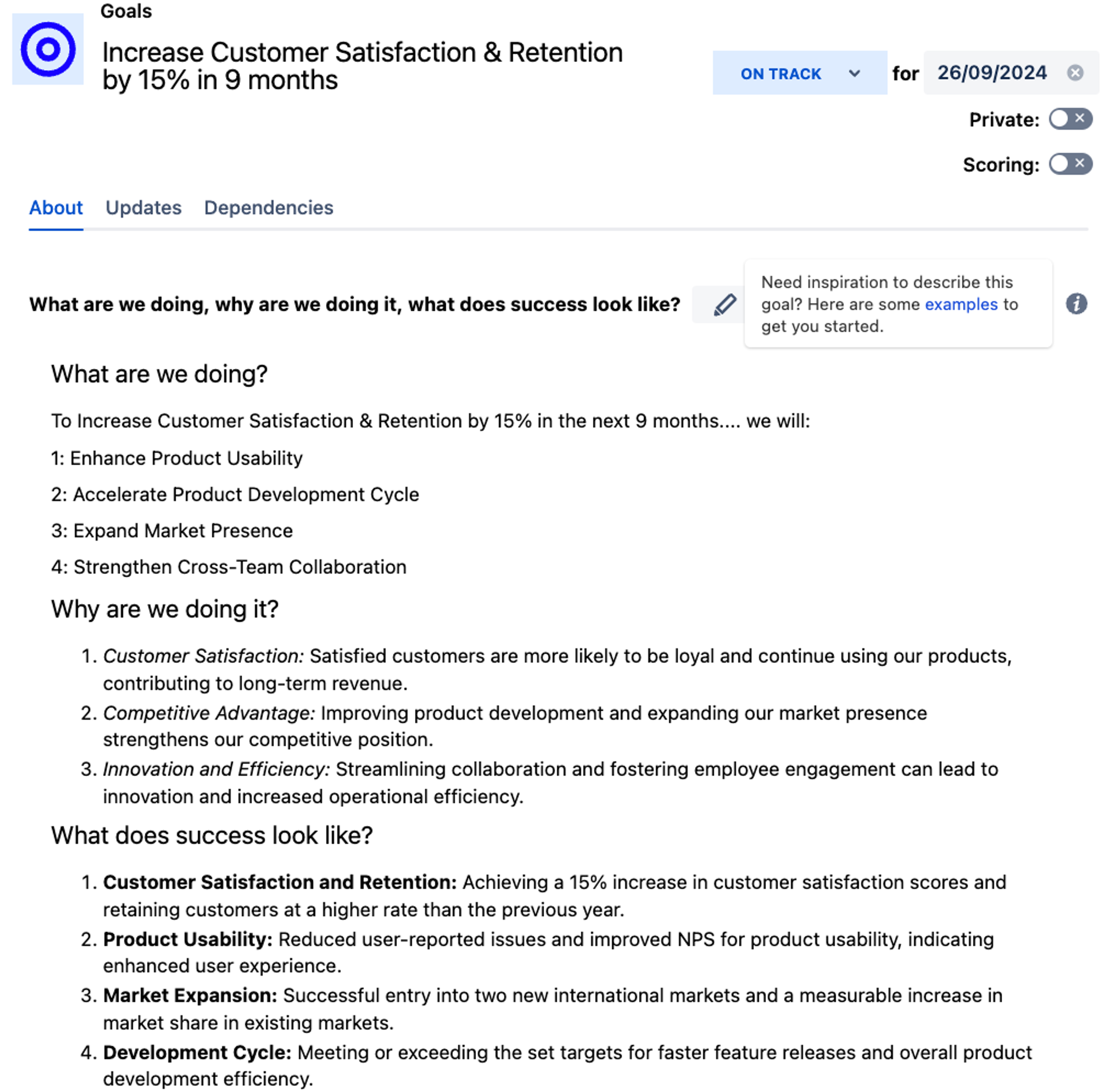
Our first update #
Awesome! Everyone knows what we're doing and why now, so let's get our first update on the board! This is what it'll look like. Pretty similar to the project interface.
The main difference is that goals are scored on a monthly basis. You can adjust this and you can add more than 1 update per month if you like.
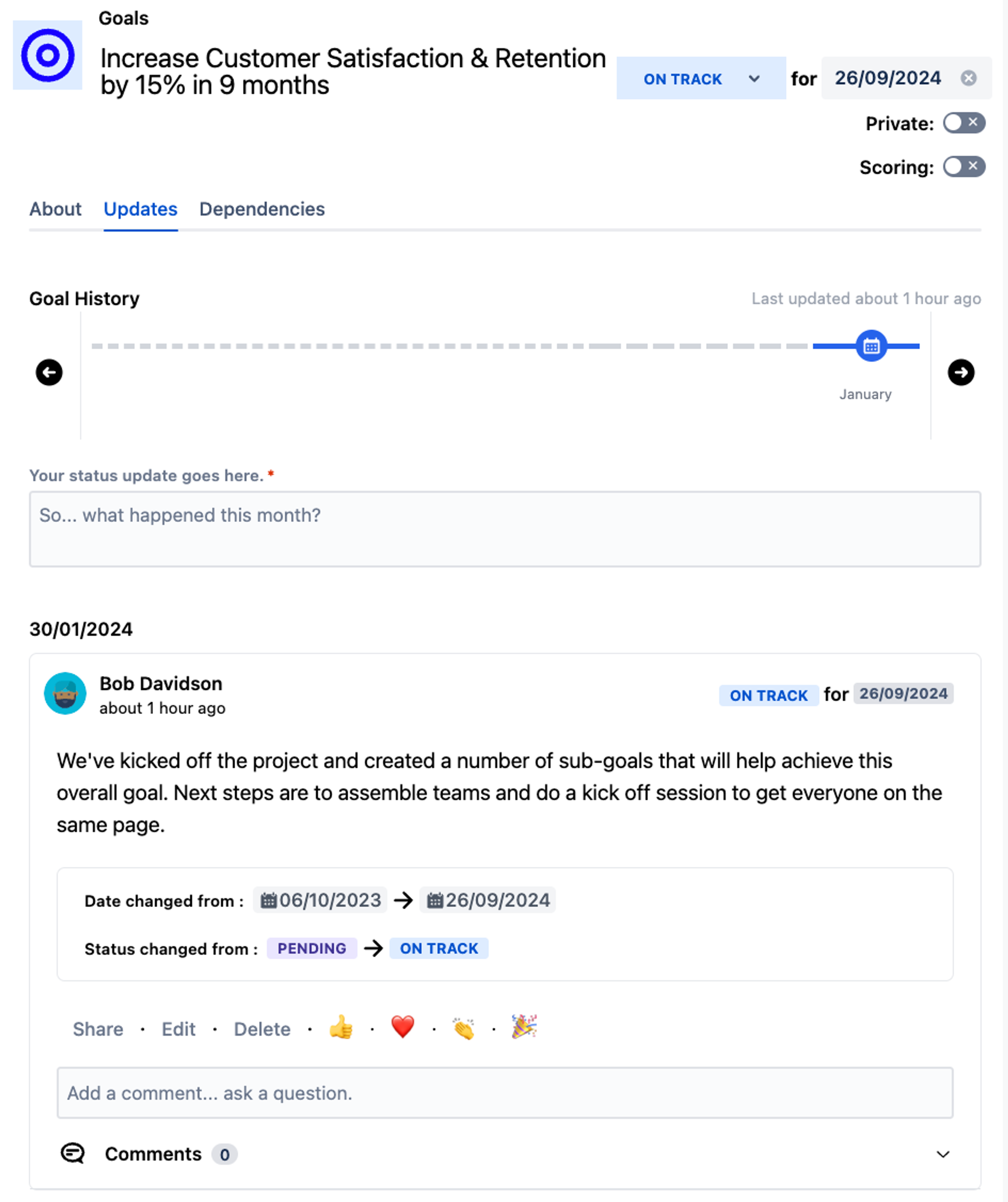
Dependencies #
As goals are long running, potentially company wide initiatives, you may have some other projects or goals that you depend upon to hit your goal.
This is where we need to keep a track of our dependencies and collate them into our goal so we get at a glance reporting on where they are.
Let's check it out.
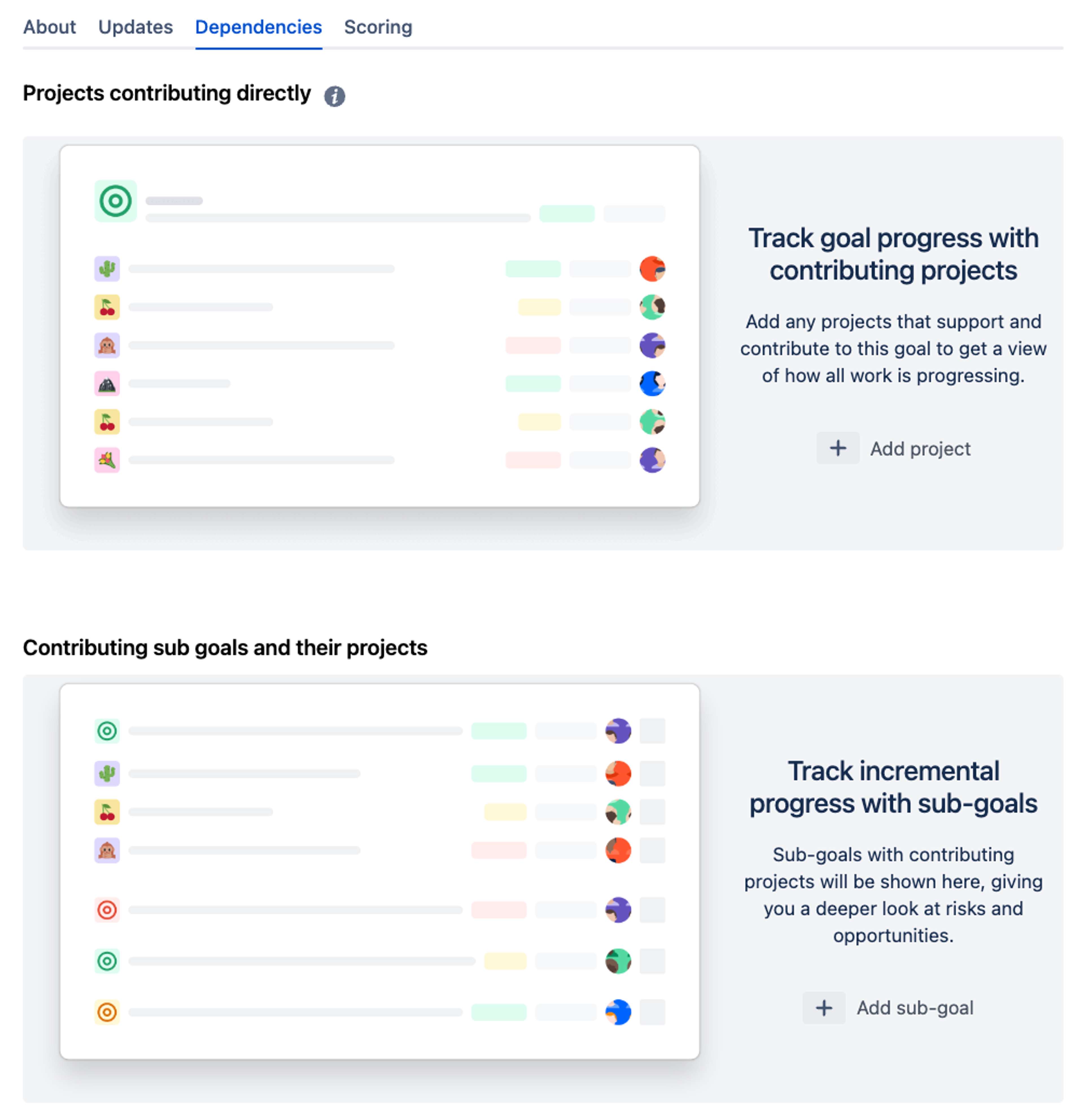
Now we've added some sub goals.
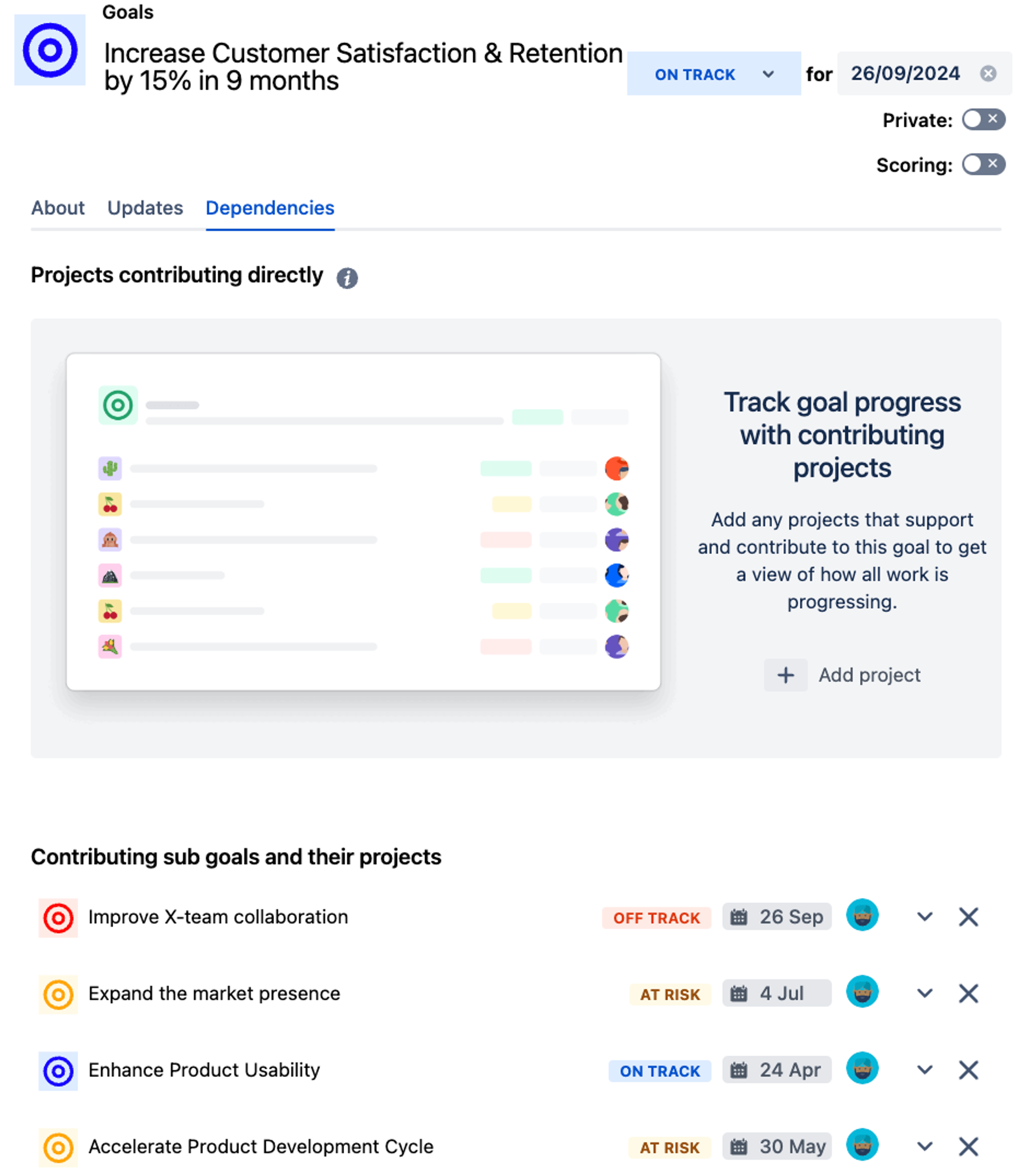
And some projects that directly contribute.
#
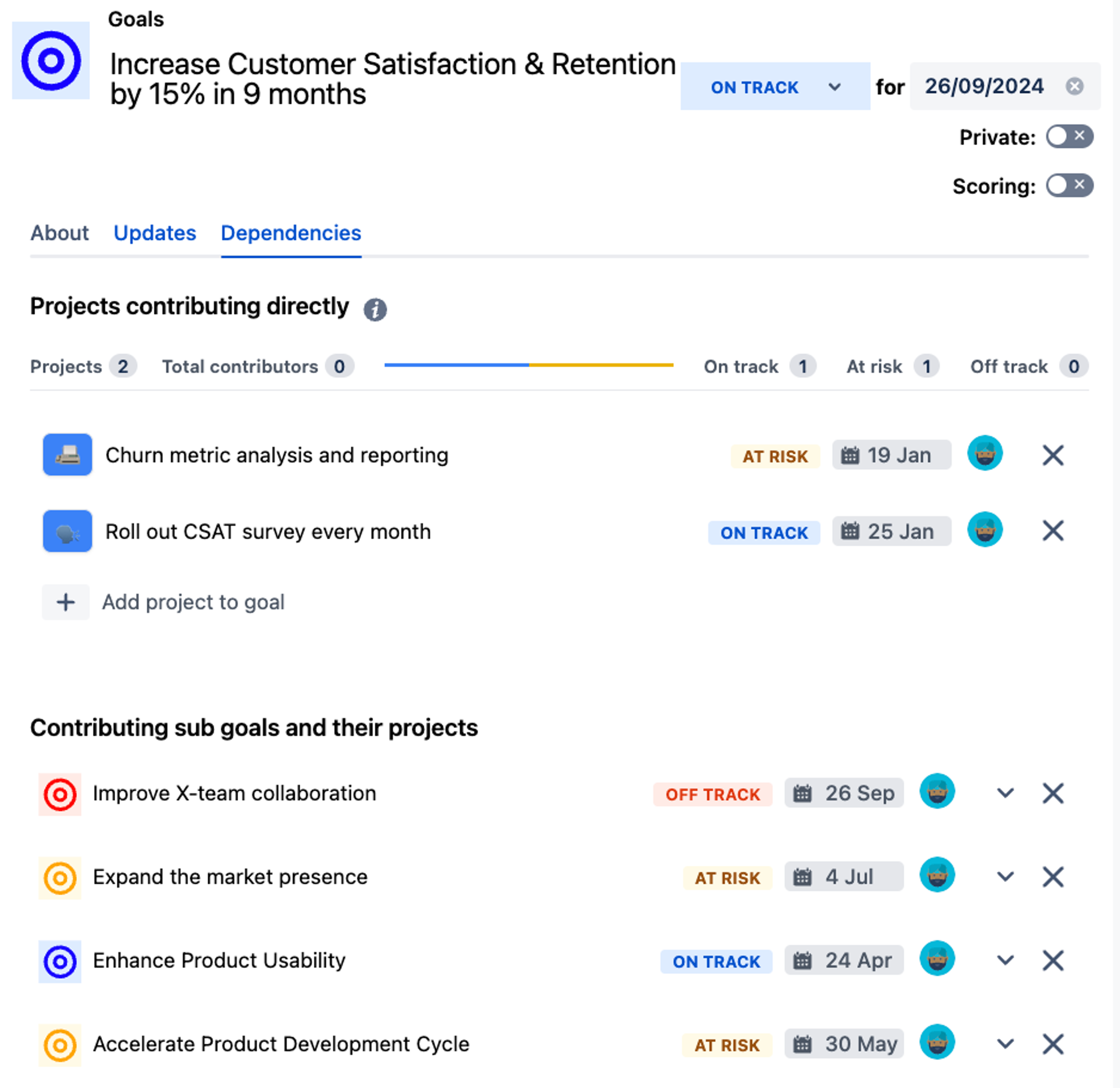
Nice! Now we can see what other projects and goals might impact us.
Scoring #
Scoring is an opt-in feature for goals. If you turn it on you'll have the option of providing a score between 1-10 for the latest monthly update. Over time it allows us to build up a picture of how a goal is progressing and track it.
Let's see it with some sample data.
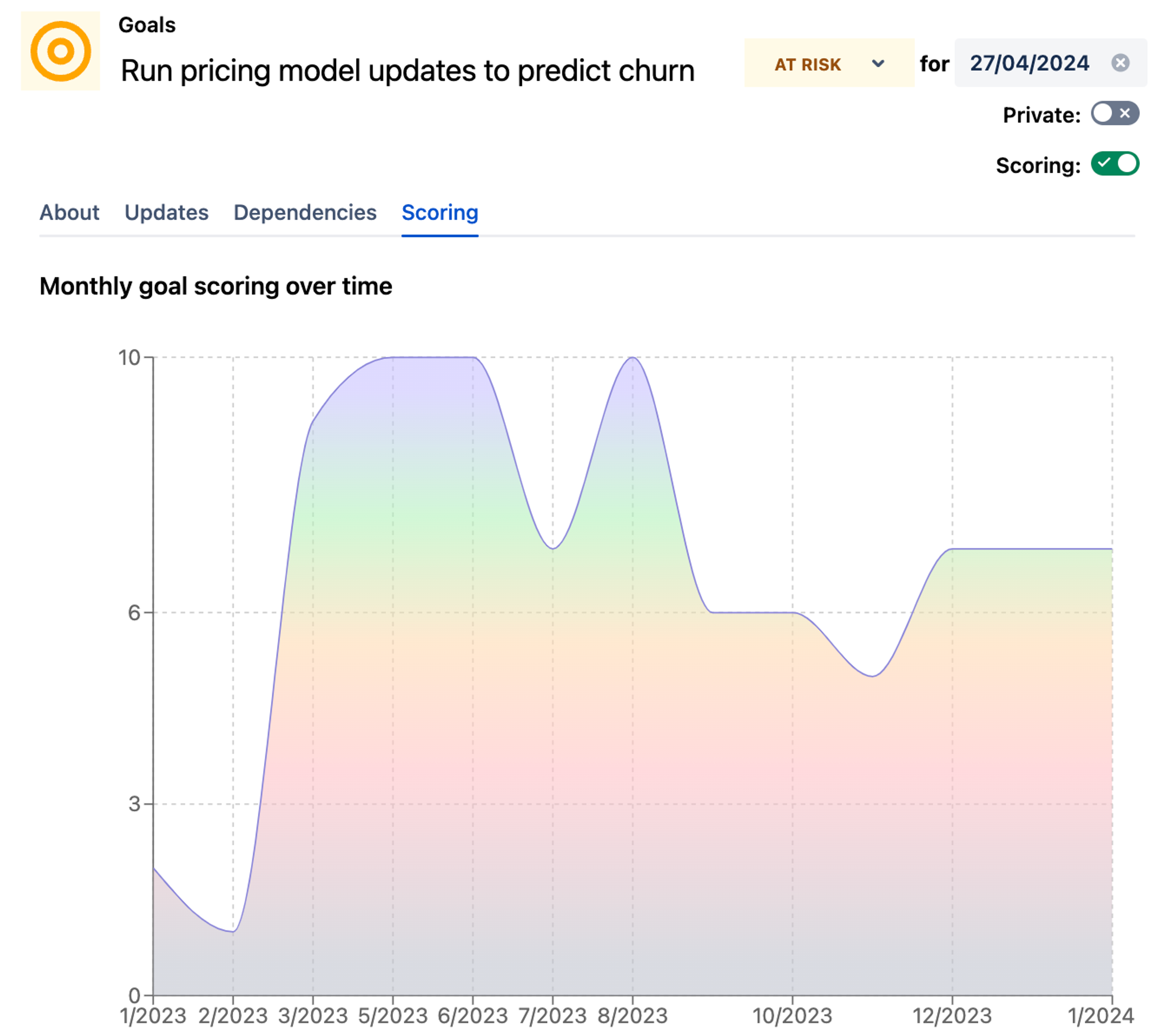
And that's it for now! Thanks for taking the time to take a walk through of how goals can evolve over time.
